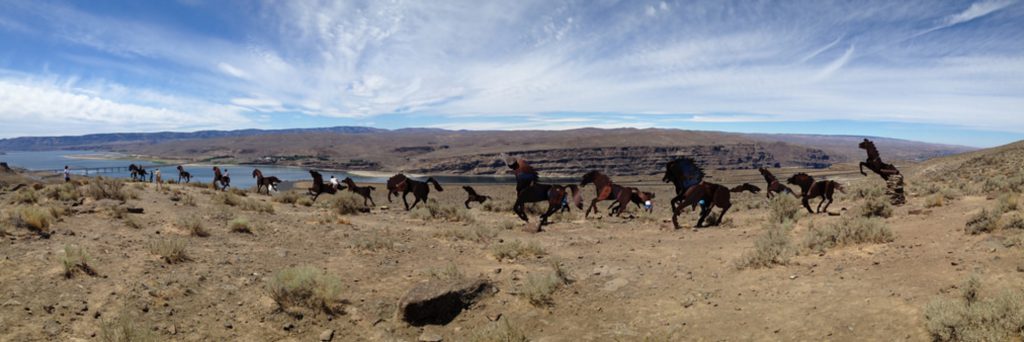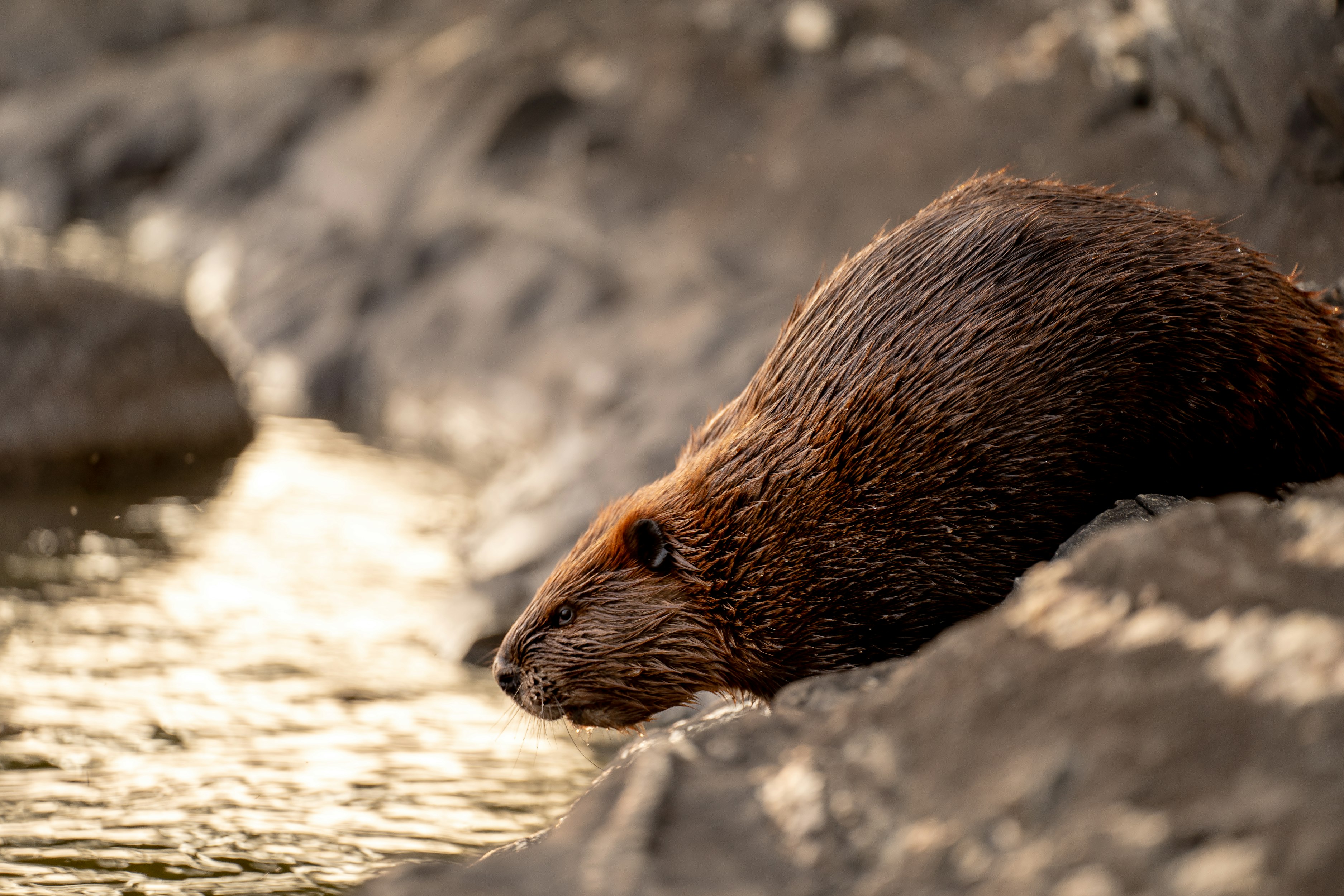They Shoot Horses (With Birth-Control Darts) Don’t They?
To be healthy, desert ranges need three things: (1) Large, concentrated migratory bison herds, or, cattle grazed to mimic bison’s migratory patterns; (2) a lot of predators of all sizes; and, (3) a high, diverse population of prey species. Remove any of these and the system collapses.
The mutual antagonism of horse advocates, cattlemen and conservationists shows that all three have drunk the Kool-Aid® of invasive species biology. This phony science maintains that if you favor one animal you must kill everything else to protect it from “competition.” Such thinking leads to actions that harm everything, as wildlife and habitat declines demonstrate.
For 50-million years, horses and their ancestors evolved in our North American deserts. They were here millions of years before every large native herbivore except for pronghorn. Native horses disappeared a mere 5,000 years ago because of human impact, along with 90% of the large animals. However, the plants with which all those missing animals coevolved remain.
Wild horses and burros – large herding grazers – could be huge assets in restoration ecology if cattlemen, conservationists and horse advocates would quit attacking each other and instead start using practices that mimic nature and promote biodiversity.
As population of wild horses grows, equestrian family planners take aim; ‘this is going to sting’
NOTE: This post originally appeared on WSJ.com on August 28, 2016
TJ Holmes begins each spring by apologizing to the wild horses in Colorado’s Disappointment Valley. Sometimes, she cries.
Ms. Holmes has known many of the roughly 90 mustangs, which roam across public rangeland and a local sanctuary, since they were foals, giving them names like “Houdini,” “Reya” and “Shadow.” Now, she’s got to shoot them.
“I say, ‘I know this is going to sting, it’s for the overall health of the herd and the range,’ ” Ms. Holmes said. By the third or fourth horse, she says, “I’m not crying anymore.”
Ms. Holmes, a former journalist, is an equestrian family planner, part of a group of horse lovers who are trying to rein in the ballooning population of wild horses by plugging females with contraceptive darts. Toting air-powered rifles and patience for birth-control jokes, they scout western U.S. ranges for fertile fillies that threaten to overwhelm federal land-management programs that already are badly strained.
The ranks of such “darters” also are growing—and these days, they can’t afford to miss. An estimated 55,000 wild horses roamed public U.S. rangelands by March, 15% more than last year and over twice the federally advised number. Their numbers are projected to double within four years.
U.S. legislators passed a law providing for wild horse population management in 1971 and for decades enough wild horses were adopted to keep their numbers stable.
But adoptions have dropped off, leading officials to round up thousands of horses each year with helicopters and trucks and hold them indefinitely in pastures and corrals. Ranchers complain mustangs eat up grass on land leased to graze cattle, and when food grows scarce, the horses can starve.
The U.S. Bureau of Land Management, which oversees public rangelands, expects to spend more than $1 billion caring for the current roughly 46,000 animals already corralled on public and private land over the course of their lives.

Volunteer darters—who number more than 100 and include teachers, real-estate agents and a retired Los Angeles detective—believe they can control populations more cheaply and humanely at riflepoint.
Their movement is rooted in Billings, Mont., where the nonprofit Science and Conservation Center was established in 1998 to research wildlife contraceptives—chiefly a vaccine called PZP. The vaccine also has been used by zoos to prevent giraffes, sea lions and other fauna from overflowing their exhibits.
The center hosts a three-day course for volunteers to learn how to mix the vaccine, identify horses and shoot a range of air-powered guns. Attendees talk strategy: Jim Havens, a retired LAPD detective supervisor who investigated robberies and assaults and earned marksmanship awards, says it is best to be nonchalant.
“You can’t act like you’re stalking them or hunting them,” said Mr. Havens, who helps curb about 70 horses’ procreation near Gardnerville, Nev. “You have to get them used to you being around, and hanging around them.”
Most darters feel passionately about mustangs, however, and fostering kinship with them can sometimes conflict with the job of jabbing them with 1.5 inch, 14-gauge needle darts.
Andrea Maki also apologizes to the horses of the Wild Love Preserve in central Idaho on the rare occasions she has to pull the trigger. Ms. Maki, president of the preserve and a visual artist, took the Billings course in 2012, but says she managed to rely on colleagues to do the darting until last year, when she found herself the sole trained darter on the range. Reluctantly, she took aim.
“We have a good thing going and I didn’t want to ruin that relation or have them put my face with getting a dart in the rump,” Ms. Maki said of her horses. “Lo and behold, they didn’t care.”
Ada Inbody, 78, a crack shot who can deliver a birth-control injection to a mare’s rump from nearly 70 yards, darts horses near Cody, Wyo. She’s a former electronics dealer who says she got started riding horses as an infant seated in front of her mother’s saddle. At 7, she took up a .22 rifle to keep snapping turtles and water moccasins from nibbling the feet of her family’s dairy cows.
Horses make for an easier target. “If you have any ability to pull the trigger and hold it steady there’s no excuse for not hitting them,” she says.
Ms. Inbody estimates she has darted horses around 600 times in the past five years, while collecting a few odd looks from rubbernecking tourists. “It’s not what your basic retired little old lady does,” she says.
It takes long days scouring canyons and sidestepping the odd rattlesnake to keep mares current on their shots. After delivering a “primer” dart, horses typically receive a booster dose after about two weeks, and another booster each year after that, which requires thorough bookkeeping and patience. Darters come to know the horses, among other things, by their markings, the bands they run with and which way their manes hang.
The Bureau of Land Management supports more darting, but Deputy Director of Operations Steve Ellis says it is impractical on some ranges that rival Delaware in size. So the bureau is also exploring spaying and neutering horses, and hopes to spur adoptions through programs like the “Extreme Mustang Makeover” training competition that first persuades wild horses to accept bridles and saddles.
One program yields about 600 horses each year, trained by inmates at prisons in states such as Nevada, Wyoming, Kansas and Colorado.
“It’s good therapy for these inmates,” Mr. Ellis says. There is an added benefit: low labor costs.
Mike Harris, director of wildlife law at Friends of Animals, ties the population explosion partly to a shortfall in wolves and mountain lions that historically preyed on wild horses, keeping them on the move.
“When they don’t stand in one place, they don’t breed as much, they don’t eat as much vegetation,” said Mr. Harris, whose group argues that rather than darting, the government should give mustangs and other species more space to roam. Without predators, he said, horses “just hang around and reproduce.”
Circle Ranch Burros from Christopher Gill on Vimeo.



